Recent Storm Damage Posts
Storms and Public Safety: The Role of Emergency Services
9/12/2023 (Permalink)
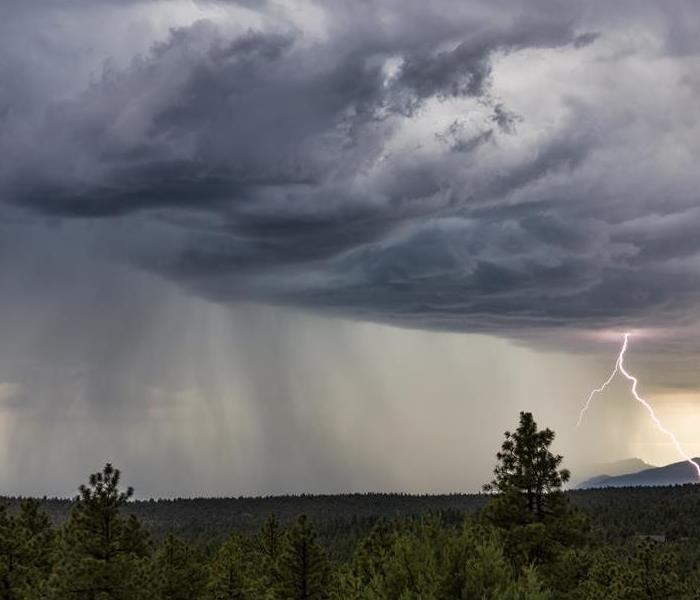 Storms can be powerful and pose risk, hire the expert for mitigating storm damage.
Storms can be powerful and pose risk, hire the expert for mitigating storm damage.
Living in the Northwest region means experiencing a wide range of severe weather conditions, including intense storms. These storms, which can bring heavy rain, strong winds, and other hazards, have the potential to disrupt daily life and pose risks to public safety. In such situations, the role of emergency services becomes crucial in protecting and assisting the community. In this blog post, we will explore the important role of emergency services in ensuring public safety during Northwest storms.
Preparedness and Planning
Emergency services play a vital role in preparedness and planning before the onset of storms. They work closely with government agencies, local authorities, and community organizations to develop comprehensive emergency response plans. These plans outline procedures for evacuations, shelter-in-place protocols, and coordination among different agencies. By engaging in proactive planning, emergency services ensure that resources are in place and first responders are prepared to handle the challenges posed by Northwest storms.
Early Warning Systems
One of the primary responsibilities of emergency services during Northwest storms is to provide early warning systems, alerting the public to potential hazards. This can include issuing severe weather alerts, flood warnings, and evacuation orders through various communication channels. Emergency services utilize technologies such as sirens, text alerts, social media updates, and emergency broadcast systems to reach as many people as possible and inform them of the risks associated with the approaching storm.
Search and Rescue Operations
During severe storms, emergency services are responsible for conducting search and rescue operations in affected areas. These operations may involve locating individuals who are stranded or in need of assistance due to flooding, landslides, or other storm-related incidents. Emergency responders work tirelessly to ensure the safety and well-being of those in distress, often collaborating with other agencies, such as fire departments, police, and volunteer organizations, to effectively carry out rescue missions.
Provision of Emergency Shelter and Supplies
In the aftermath of severe storms, emergency services play a critical role in providing emergency shelter and essential supplies to affected individuals and families. They work in coordination with local authorities to set up temporary shelters in safe locations, ensuring that those displaced by the storm have access to a secure place to stay. Emergency services also coordinate the distribution of supplies such as food, water, bedding, and other necessities to help meet immediate needs.
Restoration of Infrastructure
Following a storm, emergency services collaborate with utility companies, public works departments, and other relevant agencies to restore critical infrastructure. This includes repairing power lines, clearing debris from roadways, and ensuring access to safe drinking water. Emergency services work diligently to assess the damage, prioritize recovery efforts, and restore essential services to the community as quickly as possible.
Community Education and Outreach
In addition to their operational role during Northwest storms, emergency services also engage in community education and outreach. They organize workshops, training sessions, and public awareness campaigns to equip residents with the knowledge and tools needed to prepare for storms and mitigate risks. By providing educational resources and promoting a culture of preparedness, emergency services empower individuals and communities to take proactive measures to safeguard their lives and property.
Northwest storms can be powerful and disruptive, posing significant risks to public safety. In such challenging times, emergency services play a critical role in ensuring the well-being of the community. Their dedication and expertise are indispensable in mitigating the impacts of Northwest storms and promoting a resilient and safe community.
DIY Guide: How to Clean Up a Leaking Roof to Prevent Further Damage
6/11/2023 (Permalink)
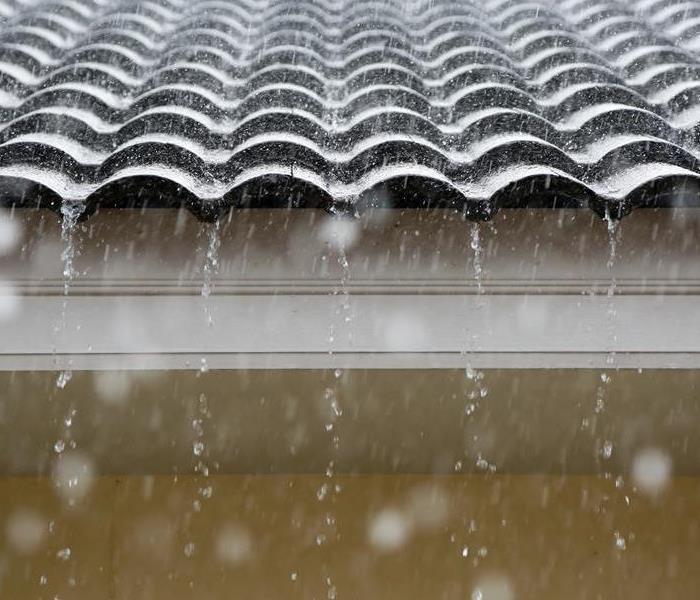 Cleaning up after a storm requires action to prevent further damage.
Cleaning up after a storm requires action to prevent further damage.
A leaking roof can cause significant damage to your home or business if left unaddressed. If you notice water stains on your ceiling or walls, it's important to take immediate action to prevent further damage. Here's a step-by-step guide on how to clean up a leaking roof.
Locate the source of the leak
Identify where the water is coming from and assess the damage. It may be necessary to climb onto the roof to locate the source of the leak. Contain the leak but placing a bucket or other container under the leak to catch any water that is dripping. If the water is spreading quickly, consider using a tarp or plastic sheeting to divert the water away from the affected area.
Remove any standing water
Use a wet/dry vacuum or towels to remove any standing water from the affected area. It's important to remove as much water as possible to prevent mold growth. Dry the area using fans or a dehumidifier to dry the affected area. This will help prevent mold growth and further damage.
Repair the roof
Once the area is dry, it's important to repair the roof to prevent future leaks. If the damage is minor, it may be possible to fix the leak yourself. However, if the damage is extensive, it's best to hire a professional roofing contractor.
Check for mold
After the area is dry, check for any signs of mold growth. If you notice mold, it's important to address it immediately to prevent health issues. Call your insurance company immediately If the damage is extensive. It's important to contact your insurance company to file a claim as soon as possible. They can help you determine what is covered and provide guidance on next steps.
It's important to note that cleaning up a leaking roof can be dangerous, especially if you need to climb onto the roof. Always prioritize your safety and use caution when addressing a leaking roof. If you're uncomfortable with the process or the damage is extensive, it's best to hire a professional roofing contractor. Additionally, taking preventative measures such as regular roof inspections and maintenance can help prevent future leaks and water damage. By being proactive and taking swift action when a leak is detected, you can help minimize the impact of a leaking roof on your property.
In conclusion, cleaning up a leaking roof requires prompt action to prevent further damage. By locating the source of the leak, containing the leak, removing any standing water, drying the area, repairing the roof, checking for mold, and contacting your insurance company if necessary, you can minimize the impact of a leaking roof on your property.
Steps to Stay Prepared for Storm Damage
1/18/2023 (Permalink)
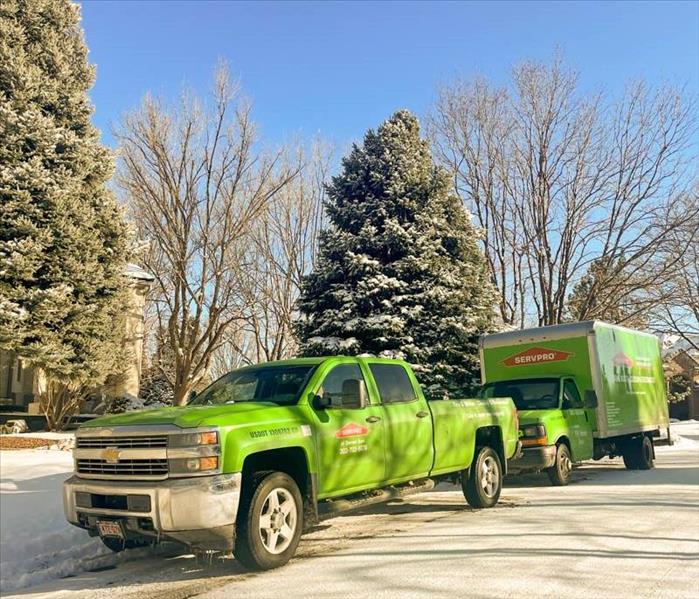 The most important thing is to be prepared.
The most important thing is to be prepared.
Storms, tornadoes, and winter storms can cause devastating damage to homes and businesses. While it's impossible to completely keep your home safe from these natural catastrophes, there are some steps you can take to prepare for storm damage. So whether you're in the path of an incoming storm or just want to be prepared for the worst, we've got some tips that'll help protect your house from Mother Nature's fury.
Prepare in advance
Prepare in advance. The best way to prepare for a hurricane, or any other natural disaster, is to have your supplies ready and organized. You should know where they are and how much of each item you have at all times.
Stock up on supplies before the storm hits. It's easy to forget that storms can last for days or even weeks, so it's important to make sure you have enough food, water, and anything else you might need during this time period.
Protect windows
One of the most important things to protect in your home is your windows. If a storm were to hit and you don't have any type of protection over them, it could cause major damage. To protect the glass from shattering, use plastic or wood sheeting and secure it around the window.
Clear yard clutter
In the days leading up to the storm, it's important to clear away any yard clutter that could be blown away by the wind. Remove any large branches that could fall on your home and clear away loose leaves and other debris from the yard. If you live in an area known for severe storms, consider hiring someone with experience removing fallen trees after a storm so that you can stay safe while performing tasks on your property.
Maintain gutters and downspouts
This is the number one way to prevent leaves, debris, and water from clogging your roof drains, which can lead to costly repairs. You should clean them regularly (at least twice a year) and make sure they are not clogged with debris. If you do notice any damage or gaps in your gutters, make sure to repair them before heavy rains come so that the problem doesn't get any worse than it already is.
Stay informed on the latest forecast
Monitor the forecast and look for any changes that might indicate a storm's path is changing, such as:
- Changes in wind speed and direction
- A shift in temperature
- Clouds or fog forming over your area
Create an evacuation plan
Even if you live in an area that is not prone to severe storms, it's still important to have a plan for evacuation. If your home does happen to be hit by inclement weather, you will be glad you had time to prepare.
The most important thing is to be prepared. Whether you’re a homeowner, renter, or business owner, it’s crucial that you take the time to protect your home from potential damage during storms. If you haven’t done so already, now is the time!
These 5 Things Make Filing a Flood Claim Much Smoother
8/26/2022 (Permalink)
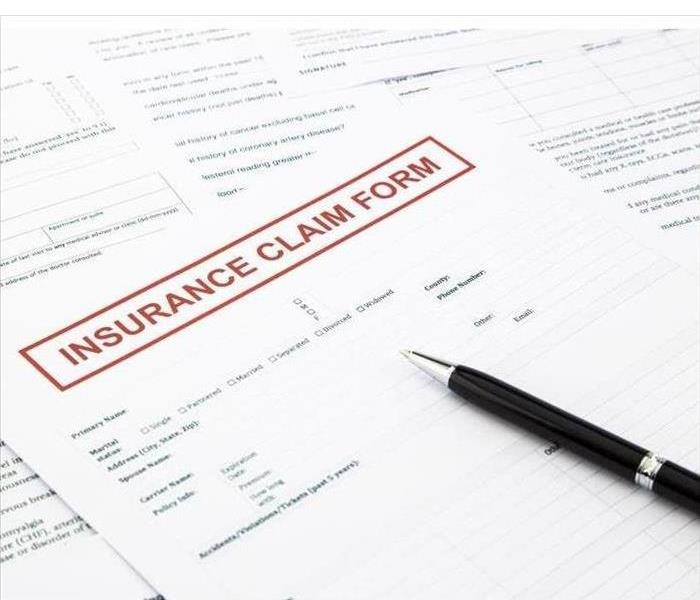 An insurance claim takes time
An insurance claim takes time
Five Ways To Prove Your Case
Are you nervous about filing a flood claim? The thought of dealing with insurance can be a bit intimidating. You want your home fixed. The insurer wants to be sure it falls under a plan. To make the situation a bit easier, it’s best to think about what the agent needs and how you can best provide that information.
1. Initiate Contact
Call immediately to start an insurance claim. The quick response shows concern and an attempt to make immediate repairs.
2. Secure the Premises
When you file a flood claim, the residence is usually uninhabitable. How are you keeping the property safe while you are out? Are broken windows boarded up? Is the roof in good condition? Make sure trespassers cannot enter and that inclement weather cannot continue to deteriorate the place.
3. Tend to Immediate Damage
An insurance claim takes time. Don’t wait to fix anything in great demand. A broken pipe or busted sewer line cannot be put off. Go ahead and get the source of trouble corrected, saving receipts to verify the repair.
4. Assess the Property
Allow professionals from several fields to complete overviews of the home. An electrician should check on wires, ensuring that everything is okay within the walls. A water restoration company in Roxborough Park, CO, should test the air and structural materials. These experts provide essential knowledge about the type and extent of contamination, putting together an action plan for appropriate cleanup.
5. Document Everything and Anything
Save all overviews and photograph anything that the water touched. Visual proof validates an appeal to seek financial compensation for personal and property loss.
Homeowners must demonstrate not only a desire to start a flood claim but also a legal and fair reason for seeking financial compensation. Remember to think about what the insurer needs, concentrating on providing an arsenal of information and a solid reason for the request.
Five Types of Storm Shutters to Protect Your Home
7/24/2022 (Permalink)
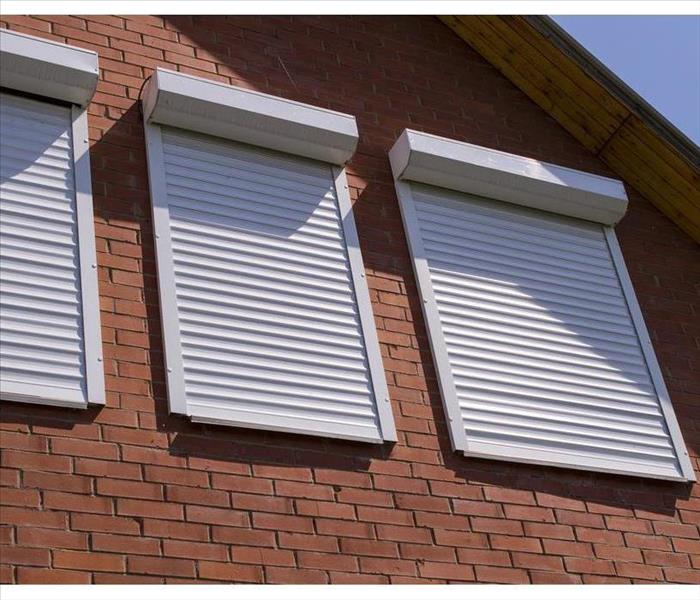 Rolling shutters are a highly effective and more permanent solution.
Rolling shutters are a highly effective and more permanent solution.
Types of Storm Shutters
If your Acequia, CO home is at risk of storm damage from high winds, you might consider some protective measures. Storm shutters are a good option, but with such variation in quality and price, where do you start? Read on to learn about some of the different choices of storm shutters for homeowners.
1. Storm Panel
Metal storm panels are to be used only when there is an imminent threat of a hurricane or severe storm. This means that for the rest of the year, your windows will be exposed. At about $7-$15 per panel, this is an extremely affordable choice for homeowners.
2. Rolling
Rolling shutters are a highly effective and more permanent solution. In addition to protection from high winds, they also offer privacy, insulation and an attractive appearance to homes. This option costs $20-$30 per square foot and is customized for every window on the house.
3. Accordion
Accordion coverings are similar to rolling shutters in that they are permanently affixed to a home in a box attached to the exterior of the building. The big difference, however, is that they are manually operated. Because of this, their price point is a little lower at $15-$25 per square foot.
4. Colonial
Colonial shutters are an aesthetically pleasing option for homes. They are similar to the decorative variety and made from metal or wood materials. They can be latched shut when a threat arrives. They come at a cost of around $200-$500 per window.
5. Bahama
Bahama awnings are permanently attached to homes with hinges. They are a great solution for warmer climates because they also provide shade. They can cost anywhere from $200-$1,000 per window.
There are many ways to protect your windows and home from the high winds and flying debris associated with hurricanes. Use your budget and personal preferences as a guide to finding the right solution for your home.
What Causes a Sewage Backup in the Basement?
6/30/2022 (Permalink)
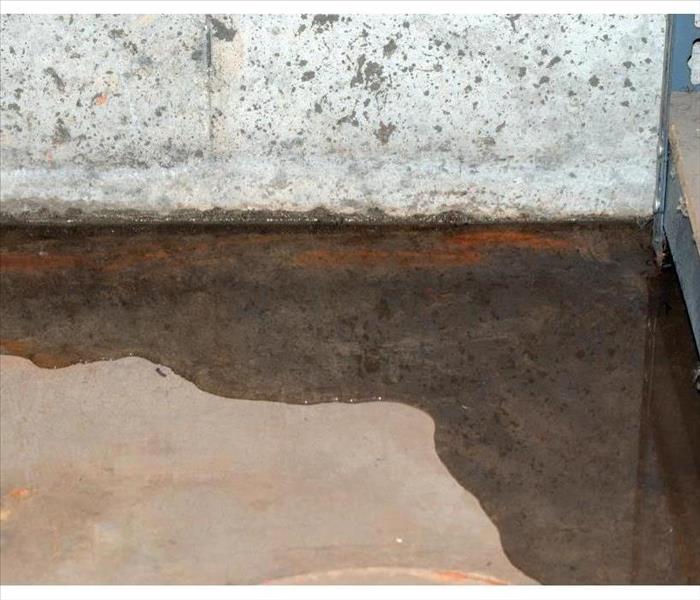 A flooded basement in Carriage Club, CO.
A flooded basement in Carriage Club, CO.
If you experience a flooded basement at your home due to a sewage backup, you may wonder what happened and what the appropriate cleanup measures may be. Fortunately, storm damage cleanup and home restoration professionals in Carriage Club, CO, can help identify the cause of the flooding and clean up affected areas.
Common Causes of Sewer Backups
The most common causes of basement flooding due to sewage backing up include the following:
- Clogs
- Bulky flushed items, such as paper towel wads
- Grease in pipes
- An aging septic system
While these culprits may most immediately come to mind, storm damage is also a frequent cause of backups.
How Storm Damage Can Lead to a Flooded Basement
If sewage lines are damaged during a particularly strong storm, it can result in problematic water flow and backups. Additionally, a prolonged period of heavy rain can be difficult for the sewage system in Carriage Club, CO, to weather, which can also lead to backups. This may cause flooded basements at individual residences during or after the storm.
How To Have Your Basement Cleaned
A flooded basement requires thorough cleaning to remove damage and restore your items. A remediation and restoration company can use a professional-grade pump to remove excess water and moisture after addressing sewage, dirt, and debris. The company will wash and disinfect areas affected by the backup and take measures to identify causes and ensure your pipes and drainage systems are in working order.
It's crucial to have your basement restored to avoid long-term damage to your items and your home. While you may be able to clean small backups on your own, it's always wise to have a professional assessment and cleaning to help prevent future issues and repeat flooding. Identifying the cause, be it aging pipes or a recent storm, also gives you the best possible chance of preventing damage in the future.
Can I Claim Commercial Property Losses on My Taxes?
4/16/2022 (Permalink)
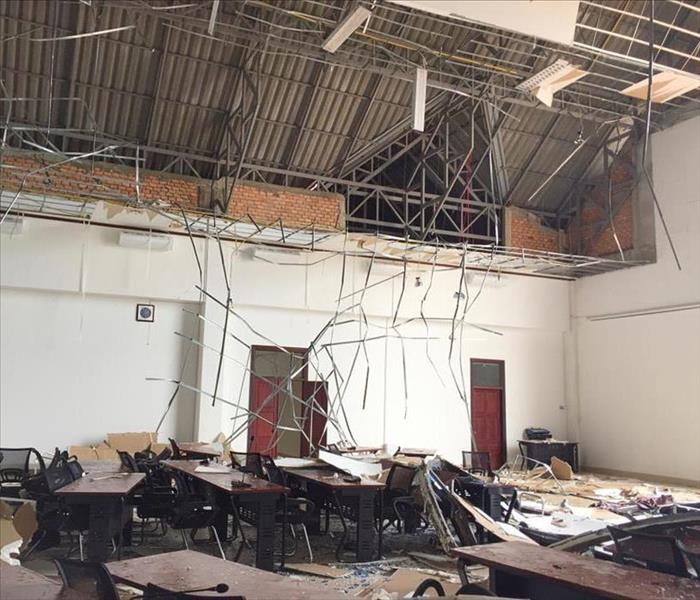 Commercial storm damage in Acequia, CO.
Commercial storm damage in Acequia, CO.
Can I deduct Losses from Commercial Property On My Taxes?
Unexpected commercial property losses have the potential to be devastating financially, mentally and time-wise. They can massively derail operations and cause a great deal of hassle. Even if you have coverage, it can be a big headache to deal with the insurance adjusters, filling out paperwork, contacting a professional cleanup and restoration service in Acequia, CO, and/or handling anything else that needs to be done in the wake of an incident resulting in one. One thing you may be glad to know is that storm damage, fire damage and other business-related losses are tax-deductible regardless of whether they are in a federally declared disaster area or not.
Casualty Losses
These include damage, loss or destruction arising from any kind of unexpected or sudden incident like a natural disaster (storm damage, smoke damage and etcetera). Normal wear and tear or time-related deterioration are not casualty losses. The three kinds (labeled as federally declared disasters) are:
- Qualified disaster losses
- Federal casualty losses
- Disaster losses
Since it involves income-producing property, your loss amount is the adjusted basis of said structure/possession (your cost, with deductions and additions for things like depreciation or renovations).
Theft Losses
If someone steals from your business, the theft loss is also the adjusted basis. If it is due to a Ponzi scheme, the rules may be slightly different.
Tax Claims Facts
Any expected or received payout from insurance companies or salvage value lowers your loss amount. You must prove any loss you claim, so detailed documentation is important. You also run the risk of acquiring capital gain if you end up with insurance reimbursement that is higher than your adjusted basis.
Storm damage and other forms of harm to your enterprise's property from events like hurricanes are tax-deductible. Theft is as well. It pays to be careful when claiming them on tax forms, especially if you do not know how much your indemnity policy will pay out as it can lead to you owing taxes on a gain instead of gaining a deduction for a loss.
How To Check Your Home for Damage After a Late Winter Storm: 3 Steps
3/29/2022 (Permalink)
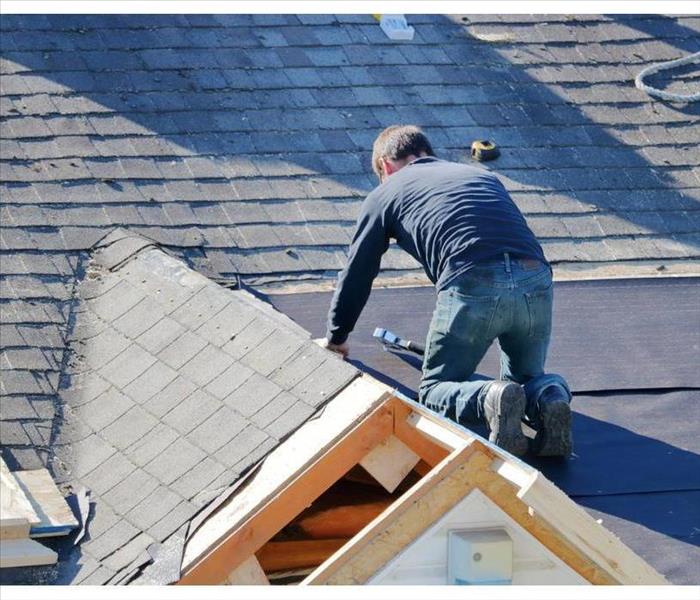 Check your roof in case you have missing shingles.
Check your roof in case you have missing shingles.
How to Assess Damage to Your Home Following a Late-Winter Storm
The arrival of March in Castle Pines, CO, may bring many things, including a late winter storm. These events can crop up quickly and cause considerable damage to your home, especially if a previous warmup had you preparing it for spring weather. If a late storm brought snow, ice and wind to your area, there are a few steps you can take to check your home for damage.
1. Inspect Your Pipes
Freezing temperatures and blizzard conditions can affect your home’s plumbing pipes, especially if they are not protected. After the storm has passed, check all your outdoor pipes and insulate them by wrapping their lengths in cotton rags or with a spray-on foam. Indoor pipes that run along exterior walls may also be at risk for freezing or bursting, so it is wise to check these as well.
2. Check Your Roof
High winds and heavy snow can cause serious roof damage, so you may want to check for missing tiles, exposed flashing and bent or hanging gutters. While the weather may not allow you to access your roof right away, you can check for leaks via your attic. If heavy snow is causing sagging in any areas, you might want to call your contractor right away to prevent collapse, something that could be dangerous and costly to fix as well.
3. Be Aware of Basement Flooding
A winter storm could be followed by lots of sunshine, which leads to a quick thaw. This could cause basement flooding, so check your sump pump and move stored belongings to higher ground for their safety. A flood damage and storm response service may be able to assist you if your sump pump is not operating properly and you are concerned about an imminent flooding event.
When a late winter storm impacts your Castle Pines, CO, home, you may be unsure about what kind of damage may have occurred. Knowing where to look in the aftermath can keep your family and property safe until bad weather passes.


 24/7 Emergency Service
24/7 Emergency Service






